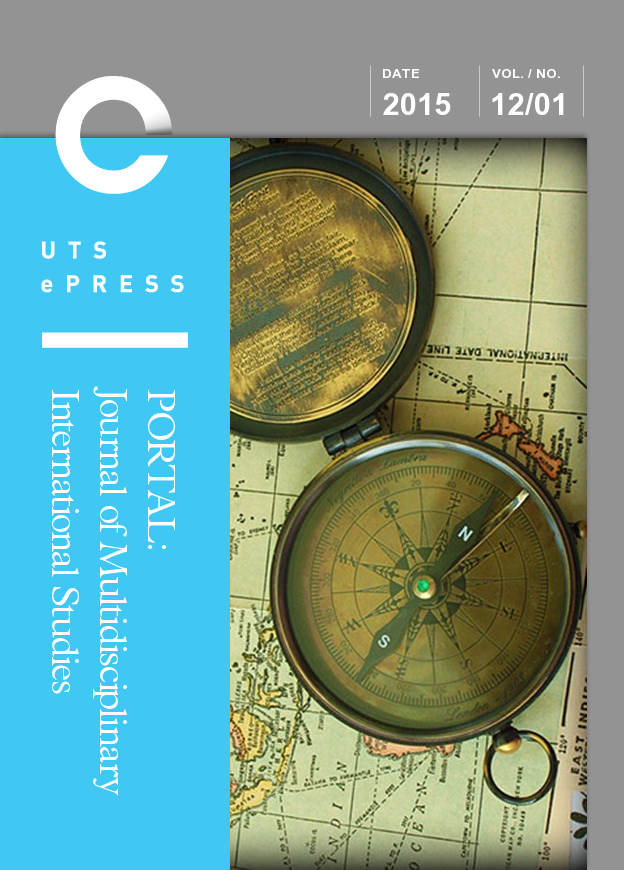Les cartes de l'Afrique au XIXe siècle et Joseph Conrad: perceptions d'une révolution cartographique (Maps of Africa in the 19th century and Joseph Conrad: Perceptions of a Cartographic Revolution)
Main Article Content
Abstract
La communication proposée aura pour but de s’interroger sur la notion de « carte mentale ». Qu’est-ce qu’une carte mentale ? Comment se construit-elle ? Comment et pourquoi faire des recherches sur les cartes mentales? Cette réflexion théorique sera accompagnée d’une étude sur les représentations cartographiques de l’empire britannique au tournant du vingtième siècle. Comment retrouver les cartes mentales de l’empire britannique au moment de son apogée à partir des discours des géographes et des cartes présentes dans les atlas, les manuels scolaires et les revues des sociétés de géographie? Tout d’abord, ces cartes présentent un empire relié au monde grâce à de nombreux liens de communication. C’est un empire qui est compris comme un véritable résumé du monde. Les cartes affirment aussi la puissance symbolique d’un empire associé à la couleur rouge, couleur qui confère une certaine homogénéité à cette construction impériale et qui suggère ainsi une identité impériale. Cependant, si de nombreuses cartes construisent l’image d’un empire unifié, certaines laissent entrevoir la diversité des statuts des différents territoires qui en font partie. D’autres encore tentent de représenter, aux côtés de l’empire formel en rouge, un empire informel commercial, c’est-à-dire la partie invisible de l’iceberg. Enfin, la plupart des cartes de l’empire britannique utilisent la projection de Mercator. Quelle image de l’empire est transmise par cette projection et quelles sont les tentatives entreprises par les géographes du début du vingtième siècle pour changer cette image? L’analyse de ces variations autour des portraits cartographiques de l’empire britannique permettra ainsi de voir comment les cartes influencent la perception d’un espace dont les territoires sont éparpillés sur les cinq continents. Cette étude conduira enfin à considérer les cartes comme des « lieux de mémoire », comme des images qui contribuent à inscrire des territoires dans les mémoires.
At the end of the nineteenth century, the maps of Africa underwent a complete revolution. The blanks that they used to show were covered in a few years by the colours of the European powers colonizing the continent. The aim of this article is to study the perception of that cartographic revolution by mapreaders at the time, including one of the most famous: Joseph Conrad. In his work Heart of Darkness, published in 1899, at the close of a century of geographical progress, he dealt both with the blanks on the maps of Africa and the European colours that replaced them. His fascination for maps led him to create a very powerful literary map of Africa where the rainbow colours of the Europeans are surrounded by darkness. That oxymoronic image enables him not only to symbolically reflect a consciousness of space but also of time, summarizing the proud certainties of the imperialism and nationalism of European powers with their colours and announcing the uncertainties and the darkness of the first half of the twentieth century. Ultimately, this article aims at showing that it is necessary to replace the literary work of Joseph Conrad in its historical context in order to understand how much his inspiration was linked both to his own experience and to a zeitgeist shared by his contemporaries.
Article Details
Section
For submissions from 31st March 2014 onwards, authors who submit articles to this journal for publication agree to the following terms:
a) Retaining Copyright and Granting Rights:
Authors retain copyright and grant the journal the right of first publication. The work is simultaneously licensed under a Creative Commons Attribution License, allowing others to share and adapt the work. Acknowledgment of the work's authorship and initial publication in this journal is required.
b) Non-Exclusive Distribution:
Authors may enter into separate, additional contractual arrangements for the non-exclusive distribution of the journal's published version of the work (e.g., posting to an institutional repository or publishing in a book). Acknowledgment of its initial publication in this journal is required.
c) Online Posting and Citation Advantage:
Authors are encouraged to post their work online (e.g., in institutional repositories or on their website) prior to and during the submission process. This may lead to productive exchanges and earlier and greater citation of the published work (See The Open Access Citation Advantage Service). If authors include the work in an institutional repository or on their website, they must acknowledge the UTS ePRESS publication with relevant details.
d) Creative Commons Attribution (CC-BY) License Awareness:
Authors should note that the CC-BY License permits readers to share (copy and redistribute) and adapt (remix, transform, build upon) the work for any purpose, including commercial use. Proper credit, a link to the license, and indication of any changes made must be provided. The manner of doing so must not suggest endorsement by you or your publisher.
For Volume 10 No 2 (2013) and earlier, the following copyright applied:
Authors submitting a paper to UTSePress publications agree to assign a limited license to UTSePress if and when the manuscript is accepted for publication. This license allows UTSePress to publish the manuscript in a specific issue.
Articles published by UTSePress are protected by copyright, with rights retained by the authors, who assert their moral rights. Authors control translation and reproduction rights to their works published by UTSePress. All rights are reserved worldwide by UTSePress, and downloads of specific portions are permitted for personal use only, not commercial use or resale.
For reprint or usage permissions, please direct inquiries to UTSePress via the journal's main editor, Dr. Nicholas Manganas at [portal.scholarly.journal@gmail.com]. Reprint permission requires acknowledgment of both UTSePress and PORTAL in the format advised by the journal editor.
